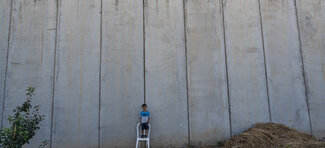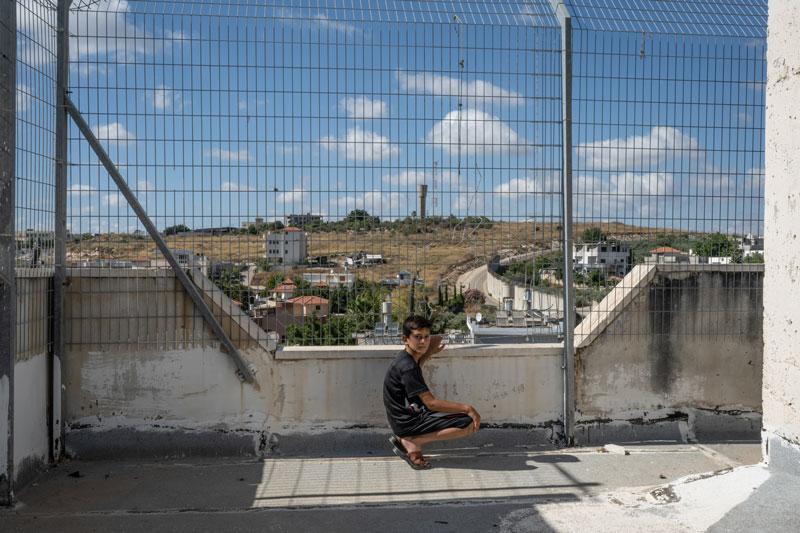Since 2002, an over 700-Km-long Barrier has scarred the West Bank.
It has hindered social life, economic activities, and access to services.
Thousands of Palestinians live in communities that remained between the Barrier and the internationally recognized 1949 Armistice Line (Green Line). They depend on special permits or arrangements to live in their own homes.
Farmers in about 150 communities rely on such arrangements to access their isolated fields and groves. In Jerusalem, Palestinian neighbourhoods have been divided from each other and walled out from the urban centre.
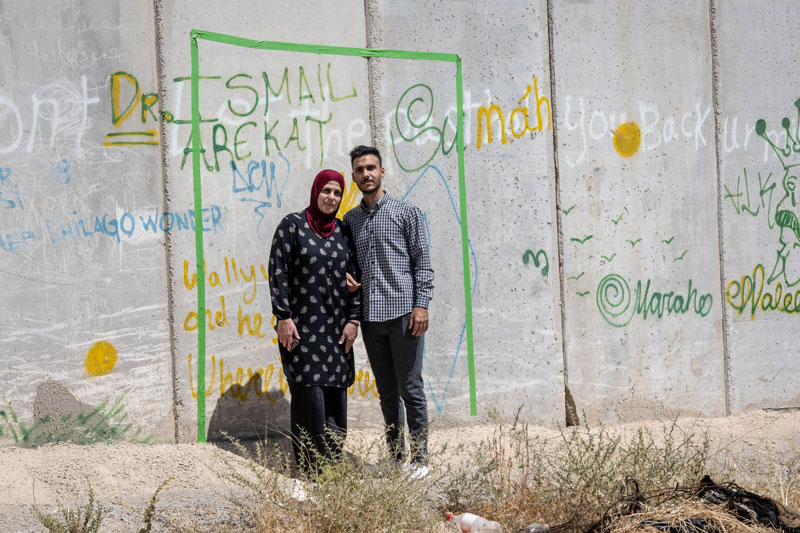
“My kids grew up not knowing what’s behind the Wall.”
“My daughter had cancer. Israeli soldiers would not let us pass the checkpoint. We used to stand on rocks and jump from there [over a lower wall that has since been replaced by a taller one], with my two-year-old daughter in my arms. She was six when she died."
“My sister lives behind the Wall, but we can’t visit her. It used to be a 10-minute drive. My kids grew up not knowing what’s behind the Wall”
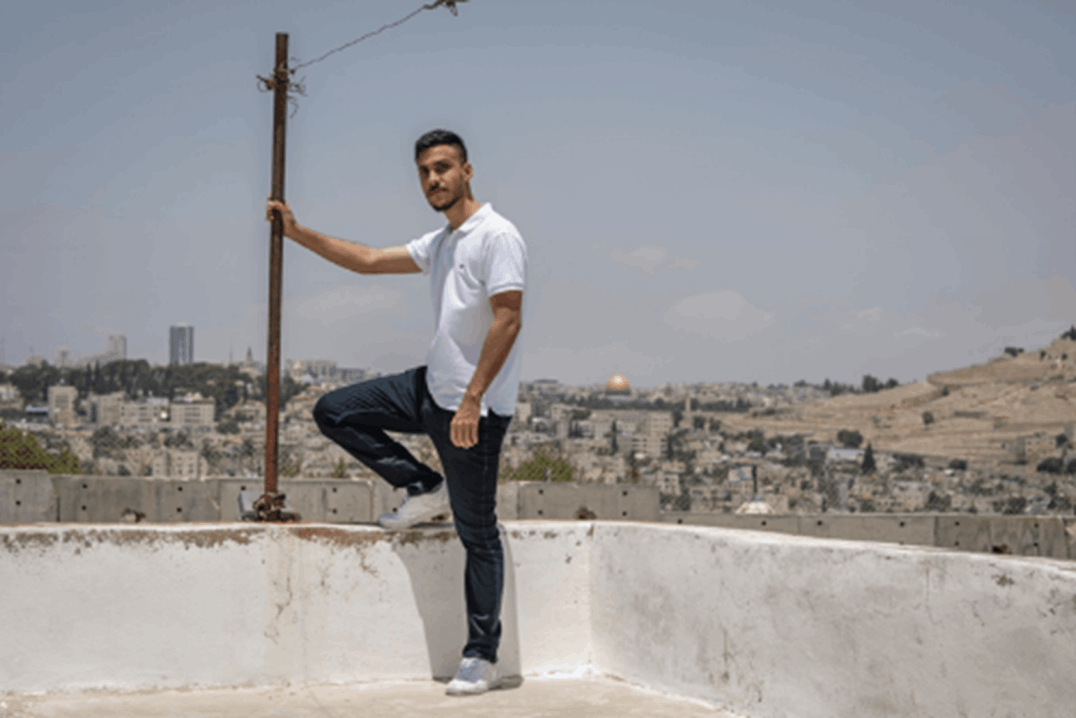
Born with the Wall
Hamza was born the same year as the Barrier. As far back as he can remember, he has always seen huge concrete blocks blocking the horizon.
The Barrier crosses right through his yard, beneath the window of the room he shares with his three brothers. It is only from the rooftop that he can see beyond the concrete blocks. Standing here, he can watch the Dome of the Rock, so close and yet – forbidden.
In the garden, the air is heavy at the end of the morning: the wind no longer passes, blocked by concrete.
The Barrier consists of concrete walls, fences, ditches, razor wire, groomed sand paths, an electronic monitoring system, patrol roads, a buffer zone and several military checkpoints.
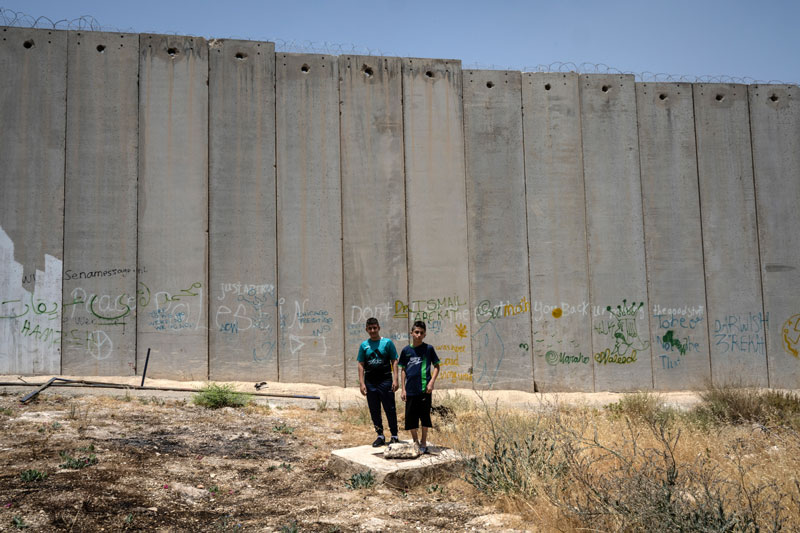
“We wish we could play football with our cousins”
“We wish we could play football with our cousins, who live just on other side of Wall.
"When we look for a breeze, we wish could see anything other than this giant gray wall.”
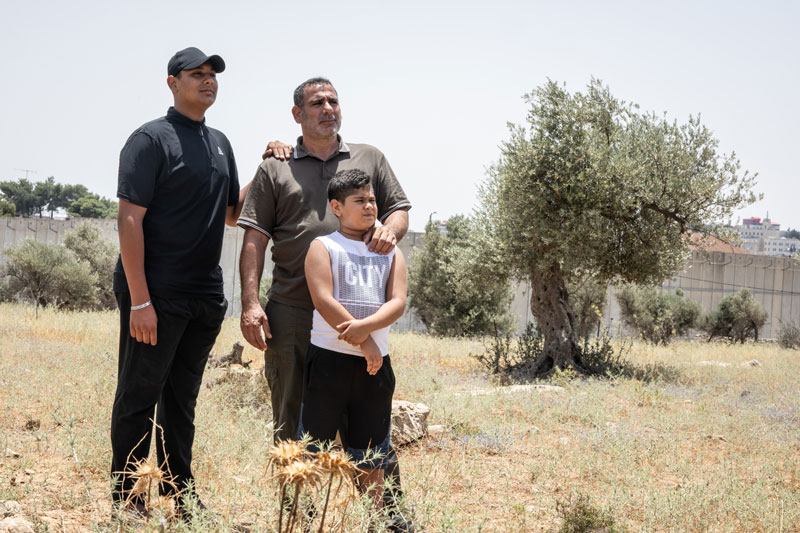
“I am not sure we are really living at all”
“I was born in this house 42 years ago. We live two minutes from the city centre of Bethlehem, but it’s on the other side now. Only half of our family has ‘Jerusalem IDs.’
“My daughters and I aren’t allowed into Jerusalem without permits, though we are physically on the Jerusalem side and cut off of Bethlehem. We can’t travel as a family. We are not really living in Jerusalem; I am not sure we are really living at all.”
The Barrier is part of a greater system of obstacles that restrict Palestinian movement not only out of the occupied Palestinian territory, but also within it.
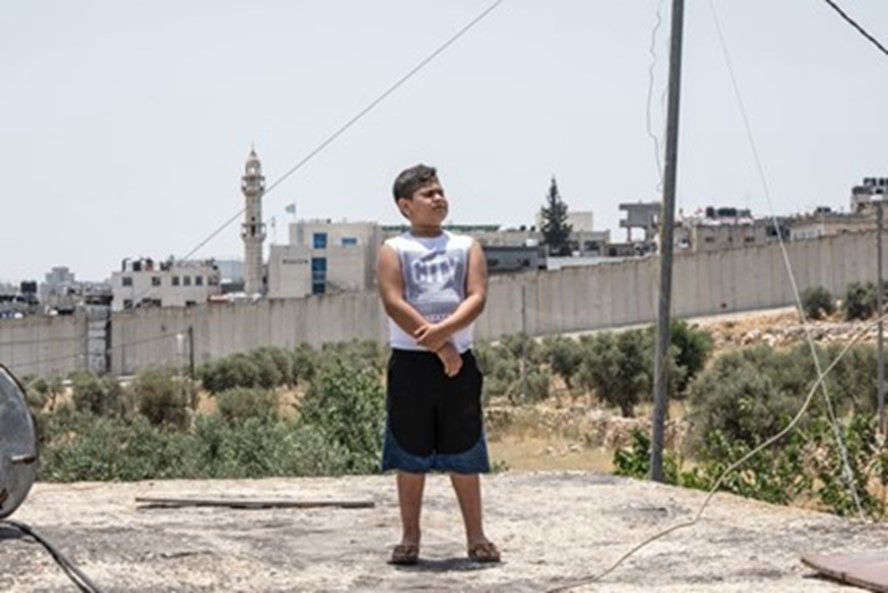
“If the Wall wasn’t there, I’d go with my friends and meet new people”
“My friends from Bethlehem cannot come to play here. And friends from Jerusalem won’t come either to our weird house by the Wall.
“If there were no Wall, I imagine sitting on our front porch, having a small party for my sisters, our cousins, and many friends.”
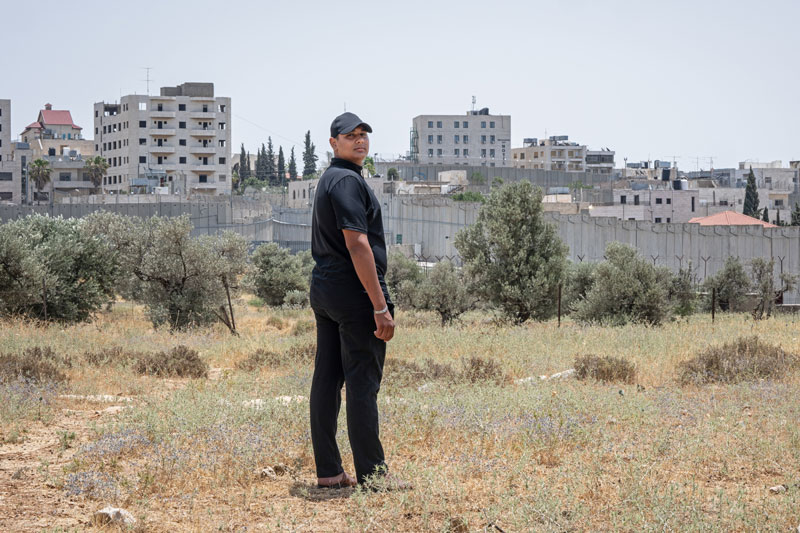
“An ambulance could not reach my mom when she had cancer”
“I came to life, and we were in Jerusalem. But we are, in fact, neither here nor there.
“I can’t get this out of my mind: my mom had cancer and needed a hospital, but the ambulance couldn’t reach her. This lasted for almost three years. She is fine now, but I still wake up worrying.”
The Israeli authorities constructed the Barrier with the declared aim of preventing attacks by Palestinians in Israel. However, most of its route is well within the West Bank, rather than on the Green Line.
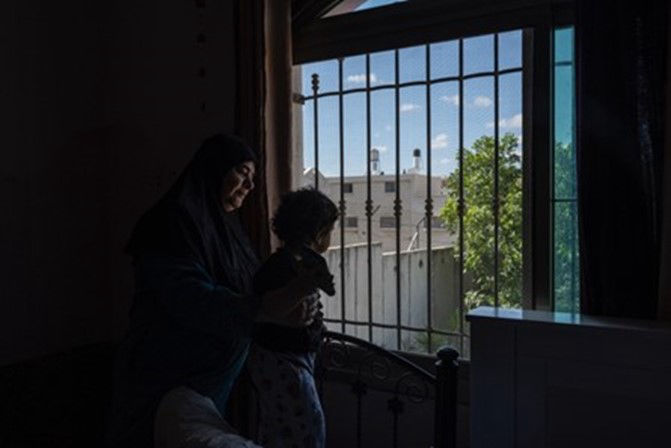
When your roof becomes a watchtower for soldiers
Abdul Halim Abu Ottoman, whose wife and grandson appear in the picture, says: “Before the Wall, we could move around. They built it so close to our home. We had Israeli soldiers sitting on our roof for more than four years. I have uncles and a sister on the other side. We’ve lost touch with friends who live only a street away.”
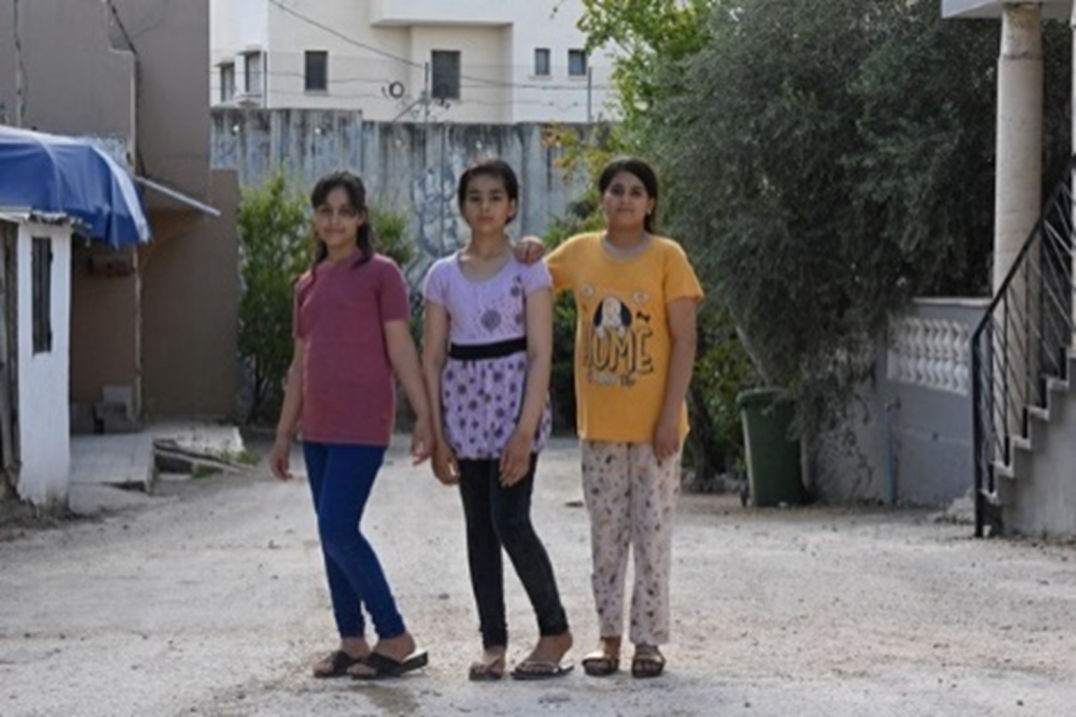
“Life on the other side must be better”
These girls’ grandfather used to have shops on both sides of the Wall; the business was successful, but after the Wall was built, he had to close the shops. “We used to talk to the neighbours behind the Wall, but we stopped seeing them. We’d visit our aunt and the sea if the Wall wasn’t there. Life on the other side must be better.”
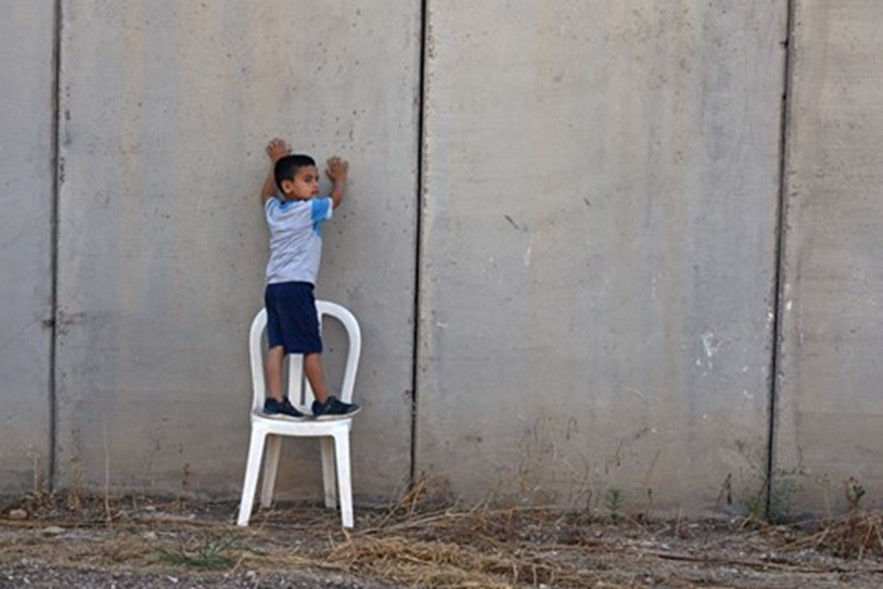
Playing by the Wall
Beyond blocking people’s movement, the construction of the Barrier entailed the confiscation of Palestinian lands on which it was built, and on which patrol roads were paved. Here, Omar is playing by the Wall, only few metres away from where his uncle’s house stood, until the Israeli authorities demolished it when they started building the Wall. He was not yet born then, but the ruins are still visible.
On 9 July 2004, the International Court of Justice (ICJ) concluded that sections of the Barrier running inside the West Bank violated Israel’s obligations under international law; and called for those sections to be dismantled. UN General Assembly Resolution ES-10/15 of 20 July 2004 demanded that Israel should comply.
Nevertheless, the Barrier has remained.
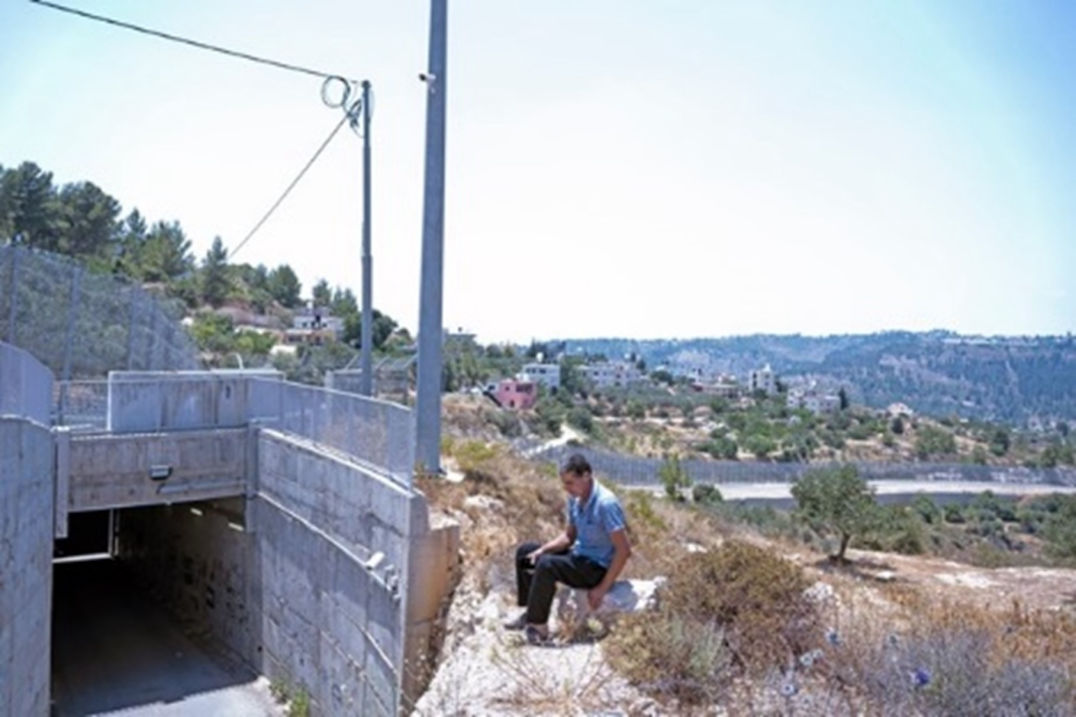
“It’s almost like living in prison”
“When the Israeli authorities built the Barrier, they didn’t want us to stay here, so close. Then, they installed this gate, but wanted to only open it on certain hours.
“Our lawyer fought to let have one remote control, which now we do. But people are afraid to visit us; soldiers are all around. One of us must always stay to lock and unlock the gate. Yesterday, we had a wedding and our oldest child had to stay. It’s almost like living in prison.”
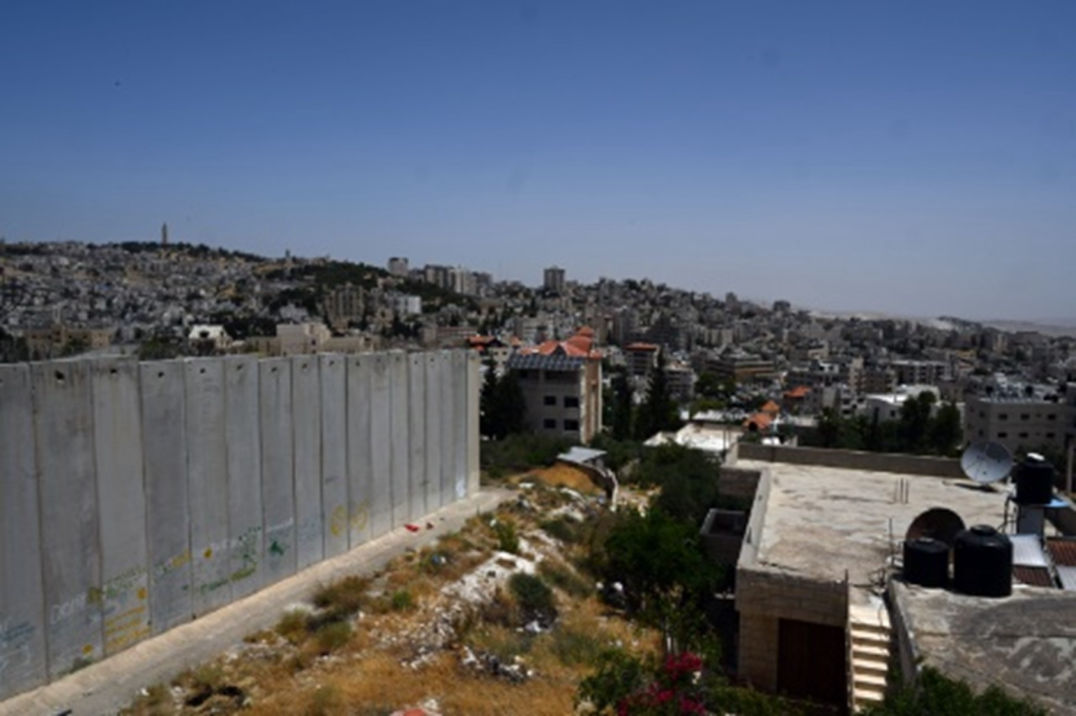
Separating Palestinians from Palestinians
Contrary not only to international law but also to the declared objective behind the construction, to prevent Palestinian attacks in Israel, most of the Barrier runs inside the West Bank, thereby separating Palestinians from Palestinians. Streets and neighbourhoods that were once contiguous, have become separate worlds. The Barrier’s route has undermined livelihoods and in many cases increased people’s reliance on humanitarian assistance.
